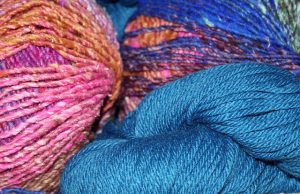Weave Something Beautiful
Weaving, whether on a small handmade loom or with no loom at all, is fun and easy to learn and doesn’t require a big investment to get started. With just a piece of cardboard, scissors and yarn you'll be weaving in no time.
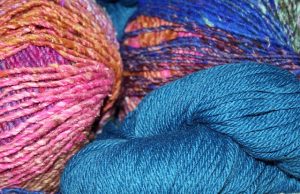 I imagine I'm like a lot of people whose weaving adventures ended in grade school and never evolved beyond potholders. As an adult, I tried weaving again and found that I really loved making things with yarn.
I imagine I'm like a lot of people whose weaving adventures ended in grade school and never evolved beyond potholders. As an adult, I tried weaving again and found that I really loved making things with yarn.Having a loom to work on, however simple it was, was so much easier for me to manage than a crochet hook or knitting needles with everything hanging there in mid-air. I also realized it was easier for me to fix mistakes in weaving than it was with knitting or crochet. That sealed the deal for me.
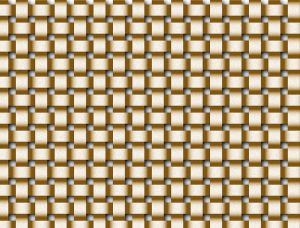 Books to Get You Started
Books to Get You Started
If you'd like to give weaving a try, the library has some great resources to get you started. If you've never woven before or are interested in getting reacquainted with weaving, I recommend Cardboard Loom Weaving: 25 Fast and Easy Projects by Harumi Kageyama.
Kageyama's book covers the basics of making several types of simple cardboard looms. It also introduces weaving terms like warp (the yarn that runs vertically on the loom) and weft (the yarn that passes over/under the warp yarn). Normally your finished project is limited by the size of your piece of cardboard. However, this book has instructions on making what the author calls a "table loom." The table is actually a component of the loom. For this loom you'll space two pieces of cardboard as far apart length-wise as your project will need to be. It's a very clever idea that allows you to weave a scarf without having to track down a 4 ft. piece of cardboard.
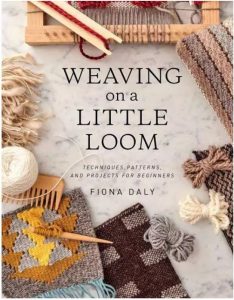 If you'd like to take your weaving up a notch, check out Weaving on a Little Loom: Techniques, Patterns, and Projects for Beginners by Fiona Daly. While the title states it's for beginning weavers, even those with more experience will probably pick up some helpful tips. Daly starts with making a simple frame loom. She then moves on to how to choose the right yarn for your project. Different fibers (cotton, wool, linen, bamboo, etc.) behave in different ways. It's important to find the yarn that will make your weaving a success. Daly also covers weave structures beyond the over/under of the plain weave. You can create a variety of patterns and textures in your pieces.
If you'd like to take your weaving up a notch, check out Weaving on a Little Loom: Techniques, Patterns, and Projects for Beginners by Fiona Daly. While the title states it's for beginning weavers, even those with more experience will probably pick up some helpful tips. Daly starts with making a simple frame loom. She then moves on to how to choose the right yarn for your project. Different fibers (cotton, wool, linen, bamboo, etc.) behave in different ways. It's important to find the yarn that will make your weaving a success. Daly also covers weave structures beyond the over/under of the plain weave. You can create a variety of patterns and textures in your pieces.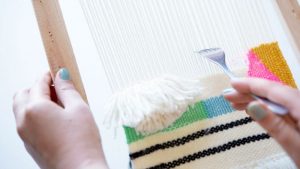 Free Video Classes
Free Video Classes
If you're more of a visual learner, Creativebug has a Weaving for Beginners class. Part one of this class includes instructions on making a simple loom with a picture frame and nails. Part two goes into more advanced techniques to add different textures to your weaving. The class also includes a gallery section where you can find inspiration from other students work. You can also add your own finished projects to the gallery.
Some weavers spend their entire lives weaving on simple looms. Weaving doesn't need to be complicated or expensive. If you've mastered the basics and want to move on to larger and more complex looms, we have books and DVDs to help. Happy weaving!












